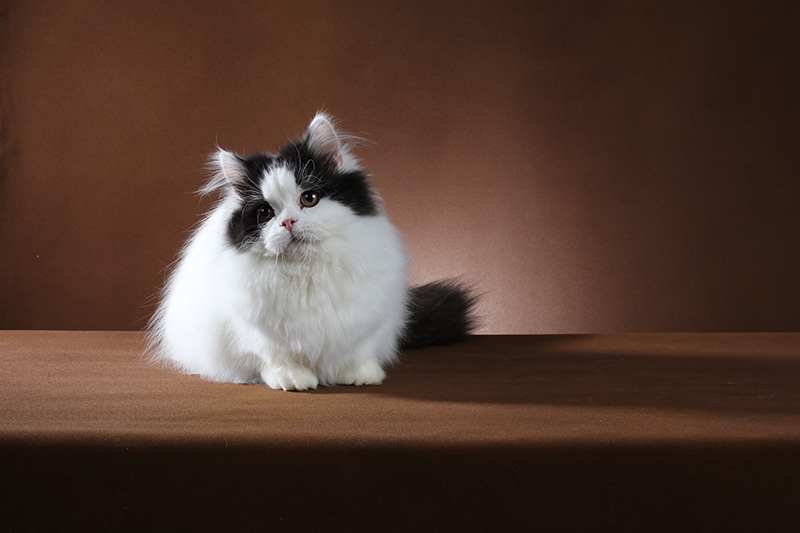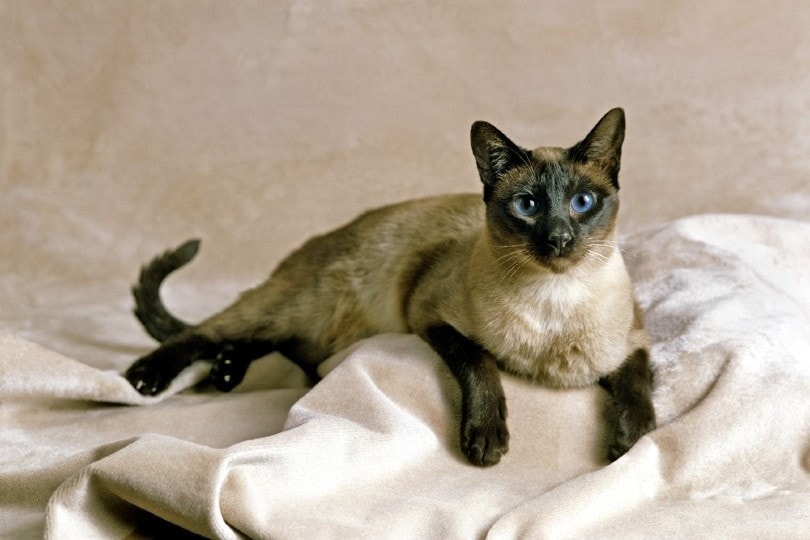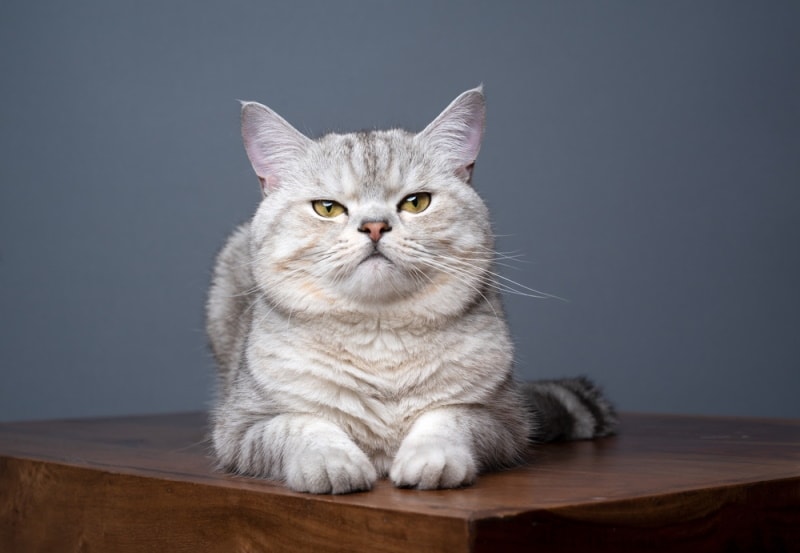Blue Burmese Cat: Facts, Origin & History (With Pictures)
By Adam Mann
Updated on
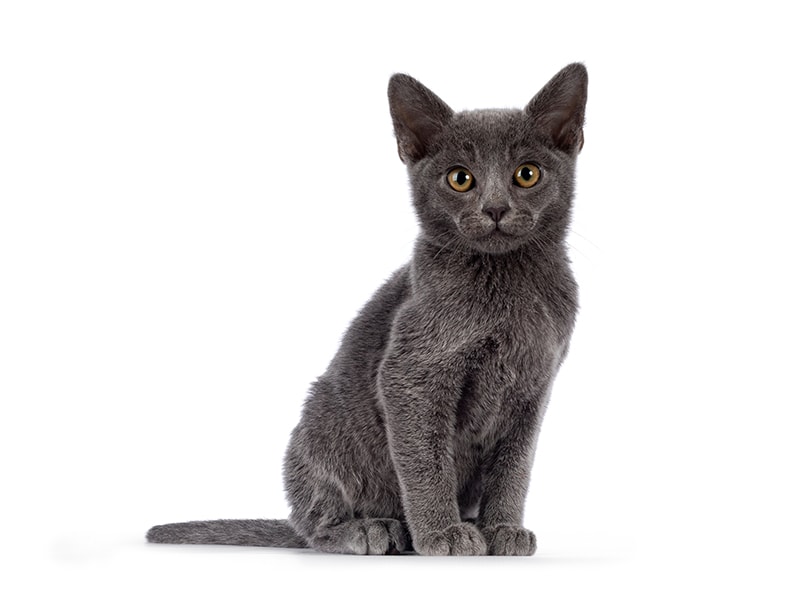
| Height: | 9–13 inches |
| Weight: | 8–12 pounds |
| Lifespan: | 9–15 years |
| Colors: | Blue, chocolate, brown, red, lilac, cream, chocolate-tortoiseshell, blue-tortoiseshell, brown-tortoiseshell, and lilac-tortoise shell |
| Suitable for: | Families, single individuals, active owners, country, and city dwellers |
| Temperament: | Intelligent, affectionate, loyal, friendly, and great with other pets |
One of the longest-lived cats with a rich and interesting history, there’s a ton to learn about the blue Burmese cat. They’re a uniquely American breed with both an American and European line, and this doesn’t even mention their Asian roots!
It’s a lot to dive into, so keep reading and we’re sure you’ll learn a thing or two about these adorable cats.
In addition to the different color options and size ranges for the Burmese cat, there are two variations with slightly different physical characteristics: the American and European Burmese.
Furthermore, there are officially 10 different color options with the Burmese cat, but no matter which color cat you go with, ensure you find a reputable breeder with a health guarantee and references, and that is willing to provide a family health history.
The Earliest Records of Blue Burmese Cat in History
Before 1930, the cats we call “Burmese cats” simply didn’t exist. It was during that time in 1930 that Dr. Joseph Thompson brought a walnut brown cat from Burma. He named the cat Wong Mau,1 and he bred her with Siamese cats in the United States.
Through selective breeding, Dr. Thompson isolated the sable coloring for these cats, and in 1953, the Cat Fanciers Association (CFA) officially recognized the breed. However, organizations took a bit longer to officially accept other color variations. Today, the CFA officially accepts 10 different color variations, four of which are solid colors, and blue is one of them.
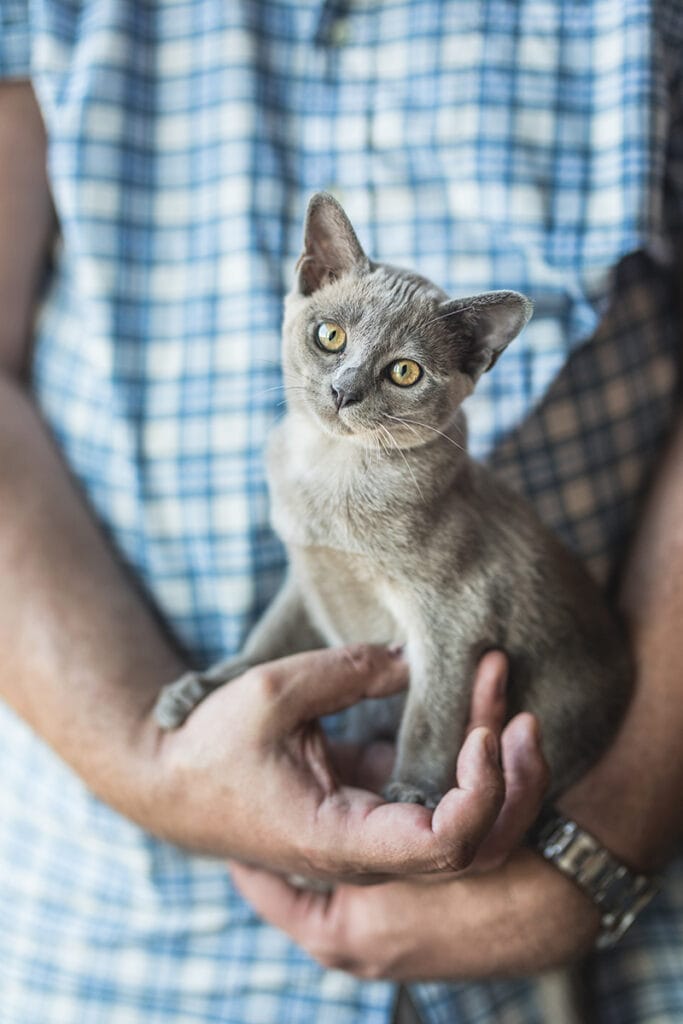
How Blue Burmese Cat Gained Popularity
As a uniquely American cat breed, the Burmese cat has been a popular option since its early inception in 1930. They captured hearts with their unique appearance and lovable personality, and that’s been the Burmese cat’s calling card.
While there was some controversy surrounding the blue Burmese cat, this generally came down to breeders and what should be considered an “official” Burmese cat, not among the owners themselves. Whether it’s a blue Burmese or another color, they’ve been a popular option for years.
Formal Recognition of Blue Burmese Cat
While Dr. Thompson first started breeding what we now call the Burmese cat in 1930, it took over 20 years for formal organizations to accept the breed. The CFA first accepted the breed in 1953, but they only accepted the sable color variation at that time.
Over time, the CFA accepted more colors, including blue, but it came with a lot of controversies. This change occurred in 1979, 26 years after they first recognized sable Burmese cats. At that time, they started to accept three additional color variations: blue, platinum (lilac), and champagne (chocolate).
While there was some controversy in 1979 about accepting the different color options, today breeders and competitions all over the world accept all the different color options.
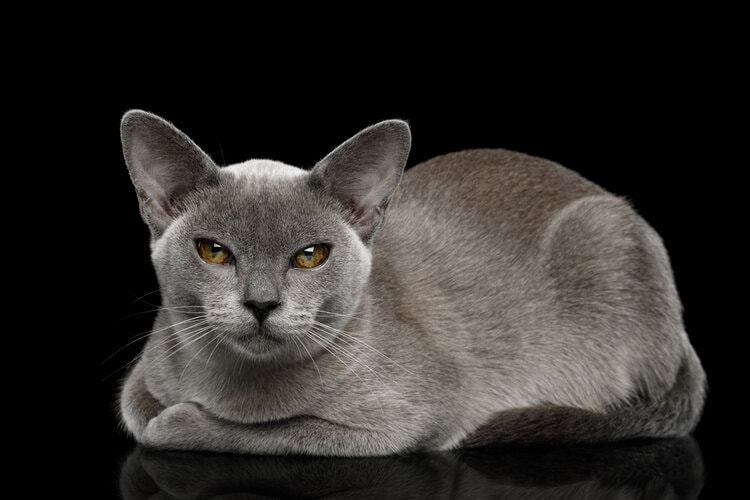
Top 5 Unique Facts About Blue Burmese Cats
There are tons of interesting and unique facts about blue Burmese cats out there, but we managed to narrow it down to five of our favorites and highlighted them for you here:
1. There Are Both European and American Burmese Cats
If you’re looking for a Burmese cat, there are two distinct classifications to choose from. European breeders preferred one look while American breeders preferred another, and the result is two distinctly different standards.
2. Burmese Cats Are a Very New Breed
While some cat breeds have origins that go back thousands of years, that’s not the case with the Burmese cat. The CFA officially recognized the breed in 1953, and the blue Burmese only gained recognition in 1979.
3. They Are Very Dog-Like
When you think of a cat, you generally don’t think of an animal that will run up to you to greet you and want to play, but that’s exactly what you’re getting with a Burmese cat. They’re loving, affectionate, loyal, and playful—all typical dog characteristics!
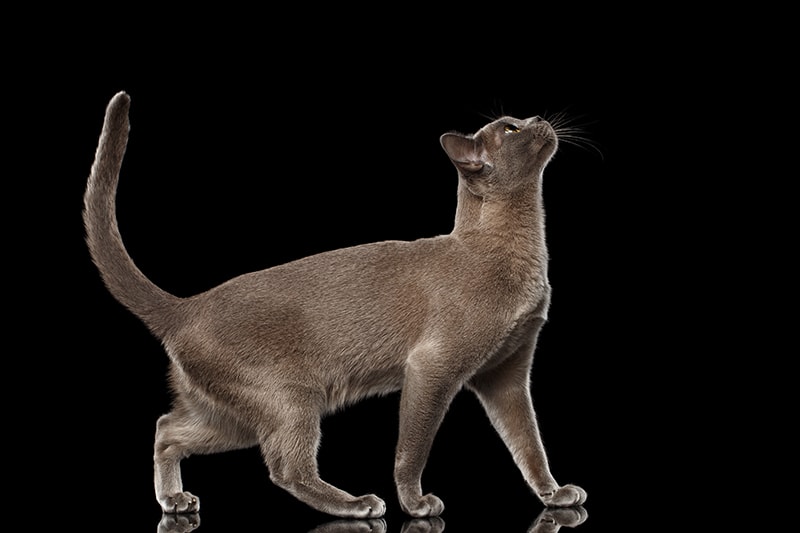
4. They Live a Very Long Time
While cats tend to live longer than dogs, Burmese cats tend to live even longer than most other cat breeds! Most Burmese cats will live well over 12 or even 15 years, and the oldest Burmese cat ever lived 35 years!
5. Burmese Cats Are Very Vocal
Siamese cats are a notoriously vocal breed, and with strong Siamese roots, it’s no surprise that the Burmese cat is pretty vocal too. They won’t be quite as loud as a purebred Siamese, but they’re still far more vocal than most other breeds.
Does a Blue Burmese Cat Make a Good Pet?
The blue Burmese cat makes an outstanding pet. Not only are they extremely loving, loyal, and playful, but they also get along great with other dog breeds, cats, and even small children in the home. Another perk of owning a Burmese cat is that they live a long time.
While this also means a longer commitment, it also means more time to enjoy with them before they pass on. Burmese cats are great pets, and whether you decide to get a blue one or another color, we’re sure you’re going to love your Burmese cat.
Conclusion
Whether you plan on getting your own blue Burmese cat or just like learning about them, the next time you see one, you should have a deeper appreciation of where these cats come from. They’re an extremely interesting breed, and with some of the most charming personalities in the cat world, it’s no wonder they’ve remained so popular year after year!
Featured Image Credit: Nynke van Holten, Shutterstock


